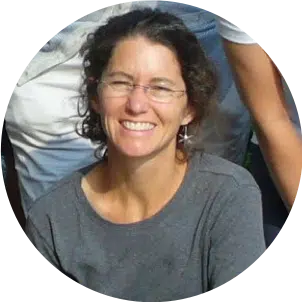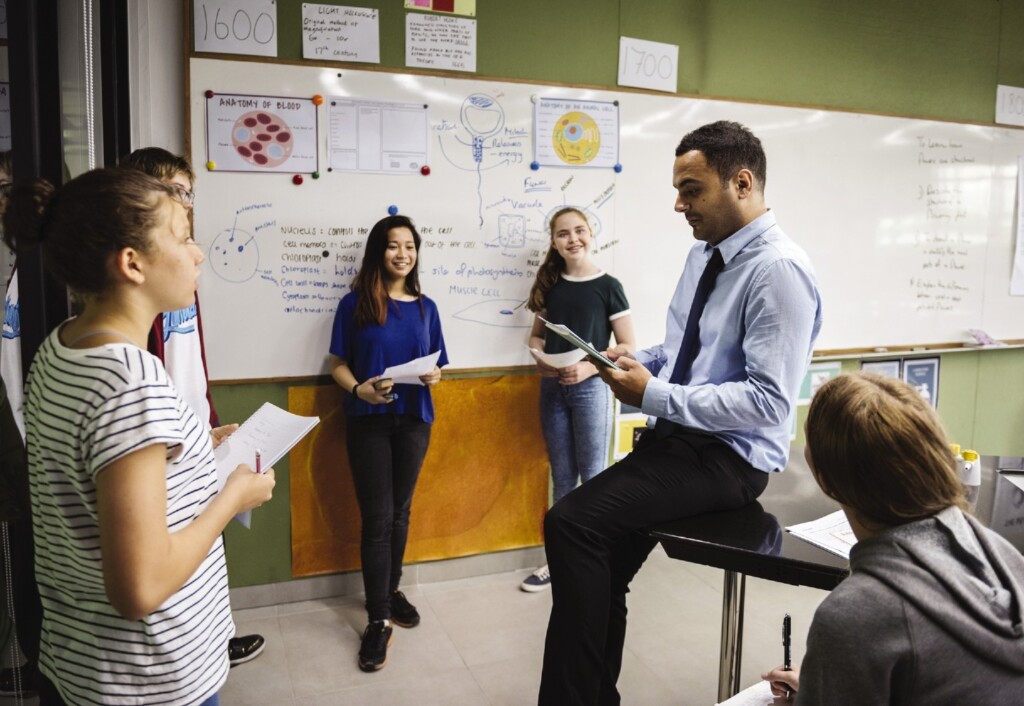Modeling Science Instruction
How can teachers use modeling to identify gaps in learning and address learning differences?
Join nationally recognized education consultant Kristen Dotti for a 90-minute webinar on how teachers can use modeling, a science and engineering practice that is used to develop questions, predictions, and explanations; analyze and identify flaws in systems; and communicate ideas.
Dotti will moderate the event. Multiple life and physical science demonstrations will be provided that incorporate such tools as diagrams, drawings, physical replicas, mathematical representations, analogies, and computer simulations.
Products Featured in the Webinar

Patterns in Electrons and Chemical Bonding
The periodic table of elements is possibly the most widely recognized scientific model, and definitely one of the most important.

Modeling DNA to Protein Kit
Have your students explore the question "Why did Baby Terra get sick?" through Mendelian and molecular modeling.

Modeling the Carbon Cycle
Develop models showing the biological, geological, and anthropogenic impacts to the carbon cycle in the classroom. In this series of 4 activities, students explain the patterns in atmospheric carbon dioxide data over the past 800,000 years.

Radioactive Decay and Half-Life Simulations
Scientists have found many ways to harness radiation, including for the generation of electricity.

Wisconsin Fast Plants® 72-Hour Monohybrid Genetics
Students germinate seeds from P1, P2, F1, and F2 generations.

Plate Tectonics and Island Formation
Students construct an explanation of how matter cycles in Earth’s interior and apply it to the movement of Earth’s plates.
Data Analysis and Computational Thinking
How can teachers integrate mathematics into their science instruction while building student engagement?
Mathematics can be an inhibiting subject for some students and science teachers, but that does not need to be the case, nationally recognized education consultant Kristen Dotti says.
Join Dotti for a webinar designed to help teachers integrate the scientific and engineering practices of analyzing and interpreting data and using mathematics and computational thinking into instruction.
Dotti will moderate the event, which will include multiple life and physical science demonstrations and easy-to-use examples.
Products Featured in the Webinar

Carolina® Introduction to Force and Motion
In this series of investigations, students analyze systems of objects and see how mathematical models are used to analyze and predict the motion of moving objects that are pushed or pulled by a constant force or that collide.

Balancing Chemical Equations Kit
A video of magnesium ribbon being dropped into a solution of hydrochloric acid is the investigative phenomenon.

Planetary Motion
Model Kepler’s laws of planetary motion in the classroom. In this series of 6 investigations, students use mathematical and computational thinking to describe the motions of the planets.

Modeling Population Genetics and Evolution
Cichlid speciation in Lake Victoria introduces the investigative phenomenon of variation and distribution of expressed traits in a population and how this might lead to evolution.

Analyzing Patterns in Climate Change
Analyze tree ring data to collect indirect evidence about how the climate of a region has changed over time.

Carolina Kits 3D® Physics Bundles
The 18 physics kits in this bundle were built from the ground up to engage students in scientific and engineering practices while they apply core ideas and crosscutting concepts—experiences that are key to thriving with the NGSS and phenomena-based learning.
Arguments from Evidence and Communicating
Join Kristen Dotti and Carolina staff for a 75-minute webinar on how teachers can help students discover how to build arguments from evidence and communicate their findings. Dotti will moderate the event. Multiple examples of phenomena-based investigations will be demonstrated by Carolina staff.
Products Featured in the Webinar

Evidence of the Big Bang
Use evidence to support the formation of the universe through the Big Bang theory in the classroom

Analyzing Wind Power Potential
Build and refine a design for a wind turbine in the classroom and analyze constraints while evaluating sites for a proposed wind turbine.

Mystery Chemical Reactions Kit
Some chemical reactions produce no visible change, whereas others produce impressive changes in appearance that clearly indicate to an observer that a chemical change has taken place.

Food Nutrient Analysis
Students perform qualitative tests for sugar, starch, lipid, protein, and vitamin C on standards and control samples.

Carolina® AM Crystal Radio
This prepaid kit voucher allows you to purchase the Carolina® AM Crystal Radio Kit (item #754010) now, but request shipment of the kit later at your convenience.

Carolina® Introduction to Electromagnetism
In this investigation, students explore the structure and function of several electromagnetic devices and learn how the scientific principles of electricity
Planning Investigations, Asking Questions, Defining Problems
In this 75-minute webinar with Kristen Dotti and Carolina staff, registrant will demonstrate Carolina 3D Kits that prompt students to plan and carry out several different kinds of investigations, either structured by the teacher–in order to expose an issue or question that they would be unlikely to explore on their own to those that emerge from students’ own questions. Demonstrations will focus on how scientific investigations may be undertaken to describe a phenomenon, or to test a theory or model for how the world works while asking questions and defining problems for further investigation.
Products Featured in the Webinar

Transformative Properties of Water
Investigate the properties of water and how they affect Earth’s materials and processes.

Group Behavior and Social Insects
Cooperative foraging behaviors exhibited by 2 different social insects, honey bees and termites, is the investigative phenomenon.

DNA Damage: Studying the Impact of UV Light
Using a UV-sensitive mutant strain of the yeast Saccharomyces cerevisiae, students investigate the impact of UV light on living organisms.

Carolina STEM Challenge®: Chemical Reaction Rockets
Students apply their knowledge of chemical reactions to solve the engineering problem, “What is the best way to modify a chemical reaction to maximize the altitude of a rocket?”

Carolina STEM Challenge®: Egg Drop
In this series of hands-on activities students learn about momentum, collisions, and stopping force as they address the Engineering Challenge, “How can a container be built to protect fragile cargo during a collision?”

Carolina Kits 3D® Life Science Bundles
Grades 9–12. The 30 life science kits in this bundle engage students in scientific and engineering practices while applying core ideas and crosscutting concepts—experiences that are key to thriving with the NGSS and phenomena-based learning.
PRESENTER

Kristen Dotti
Kristen Dotti is a geneticist by training and a classroom teacher who has spent 27 years teaching high school AP® and IB® science and mathematics. She writes full-year and case study curricula using exclusively hands-on methods for implementing student-centered NGSS practices. For the last 15 years, she has worked with schools and districts on long-term improvement plans for the professional development of faculty, focusing in particular on increasing student engagement and critical thinking.
Previous popular webinars by Dotti include Teaching Science Remotely, Leading High School Science Investigations Remotely, Making Thinking Visible, and Finish the Year Strong and Prep for the Future.
Please contact Kristen at kristen.dotti@catalystlearningcurricula.com, or visit Catalyst Learning Curricula for more information on how she helps teachers.
Additional Reading: Webinar: Making Thinking Visible
Kristen Dotti is a geneticist by training and a classroom teacher who has spent 27 years teaching high school AP® and IB® science and mathematics. She writes full-year and case study curricula using exclusively hands-on methods for implementing student-centered NGSS practices. For the last 15 years, she has worked with schools and districts on long-term improvement plans for the professional development of faculty, focusing in particular on increasing student engagement and critical thinking.
About The Author
Carolina Staff
Carolina is teamed with teachers and continually provides valuable resources–articles, activities, and how-to videos–to help teachers in their classroom.

